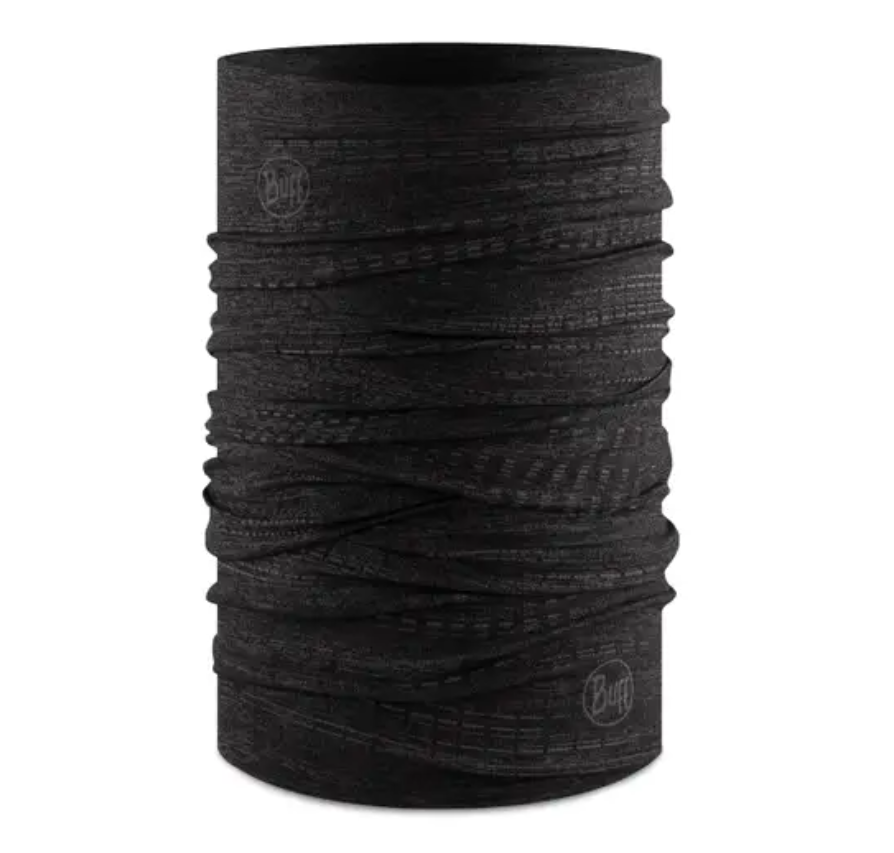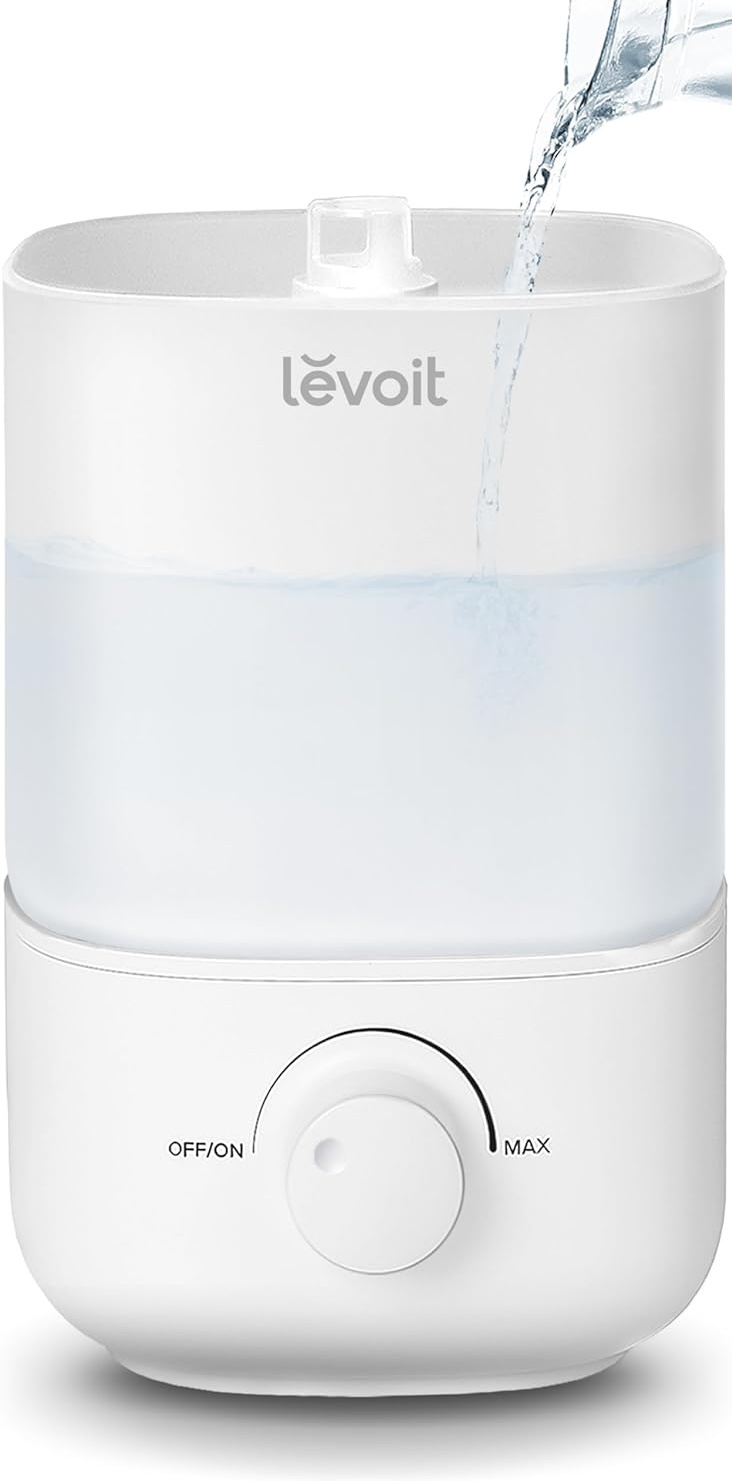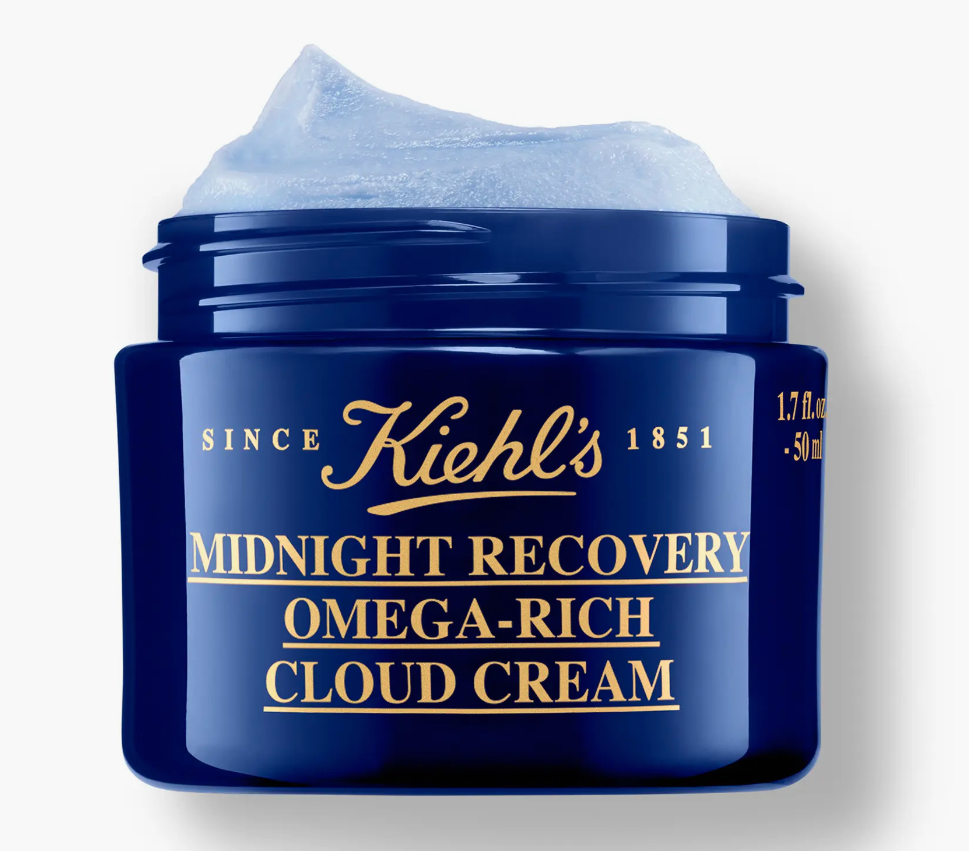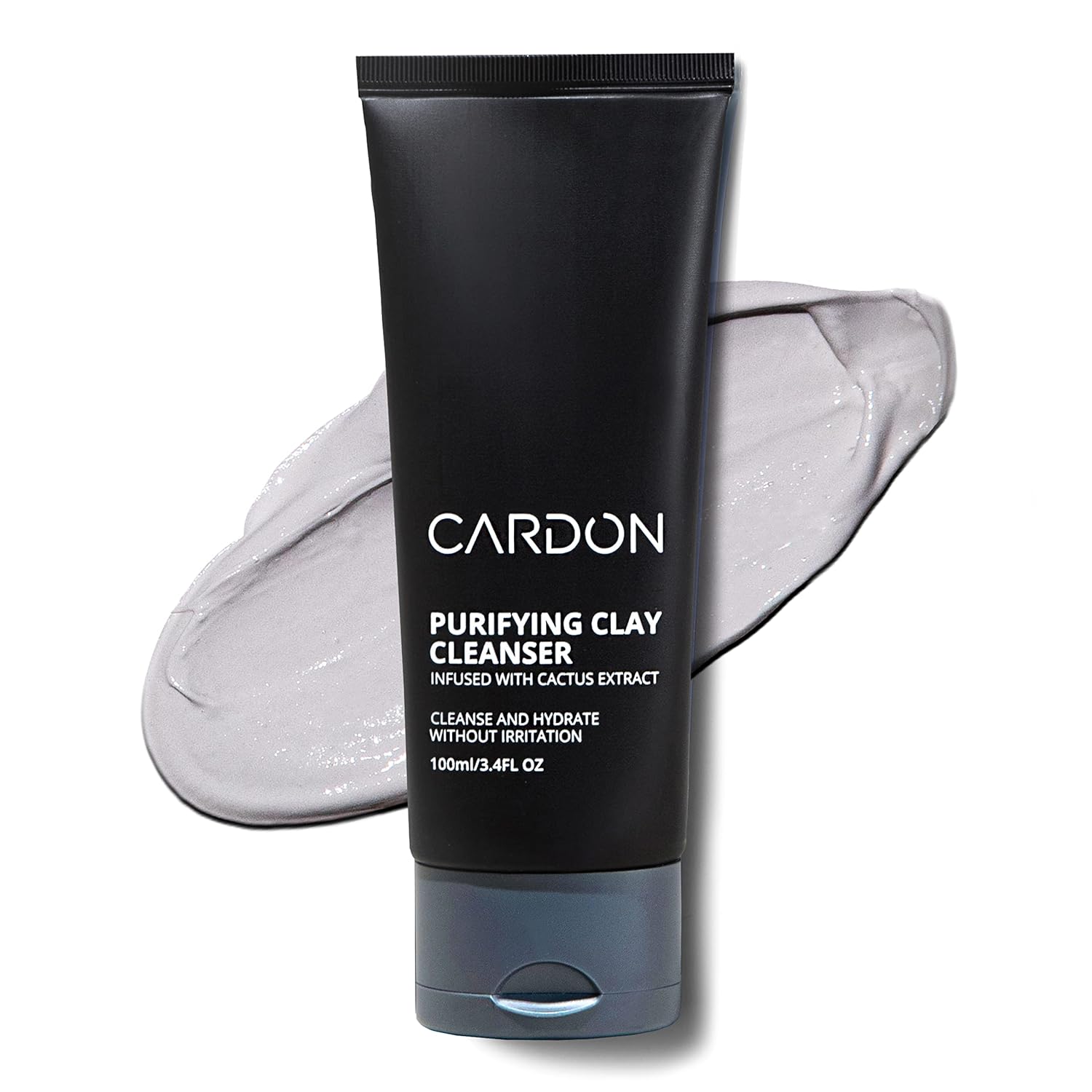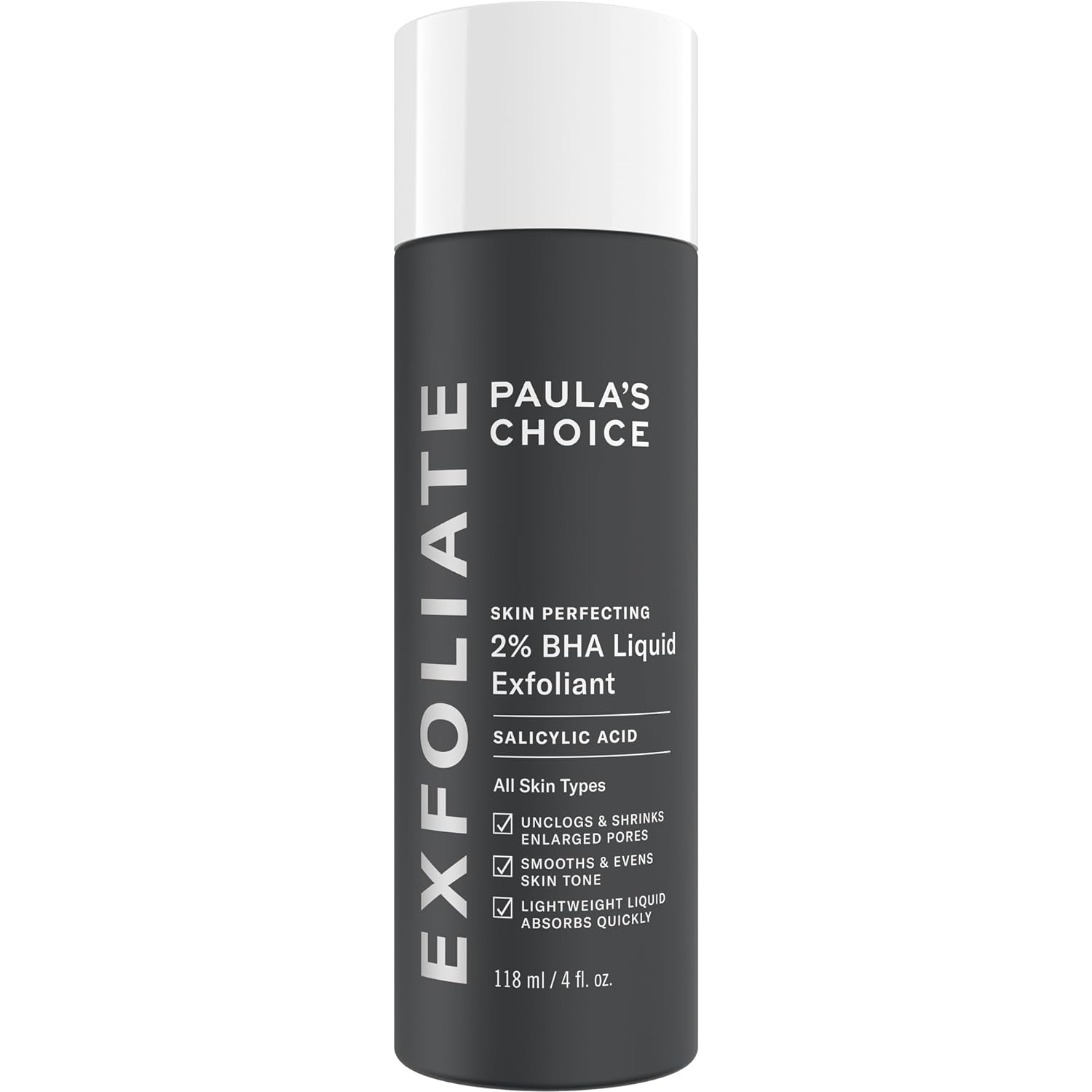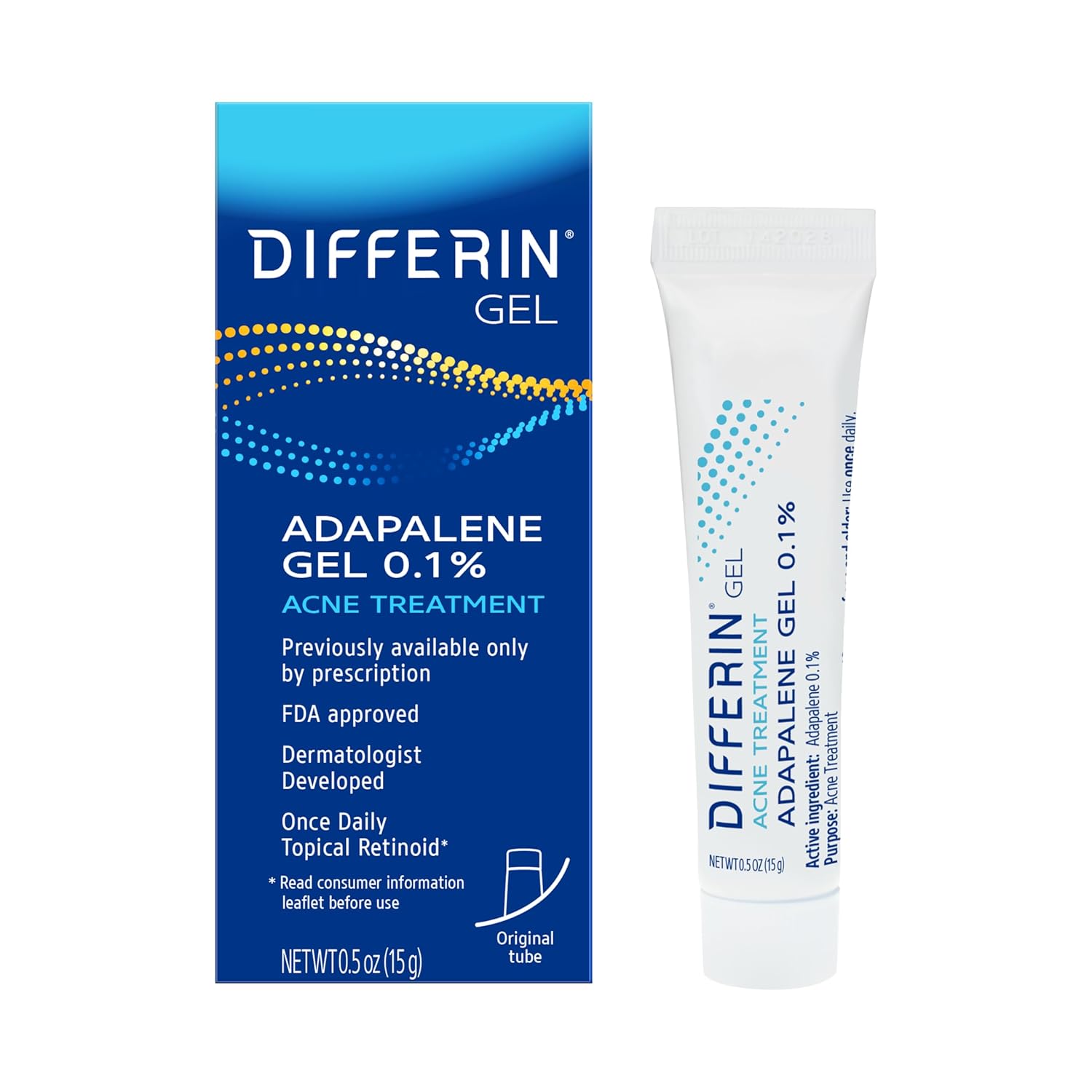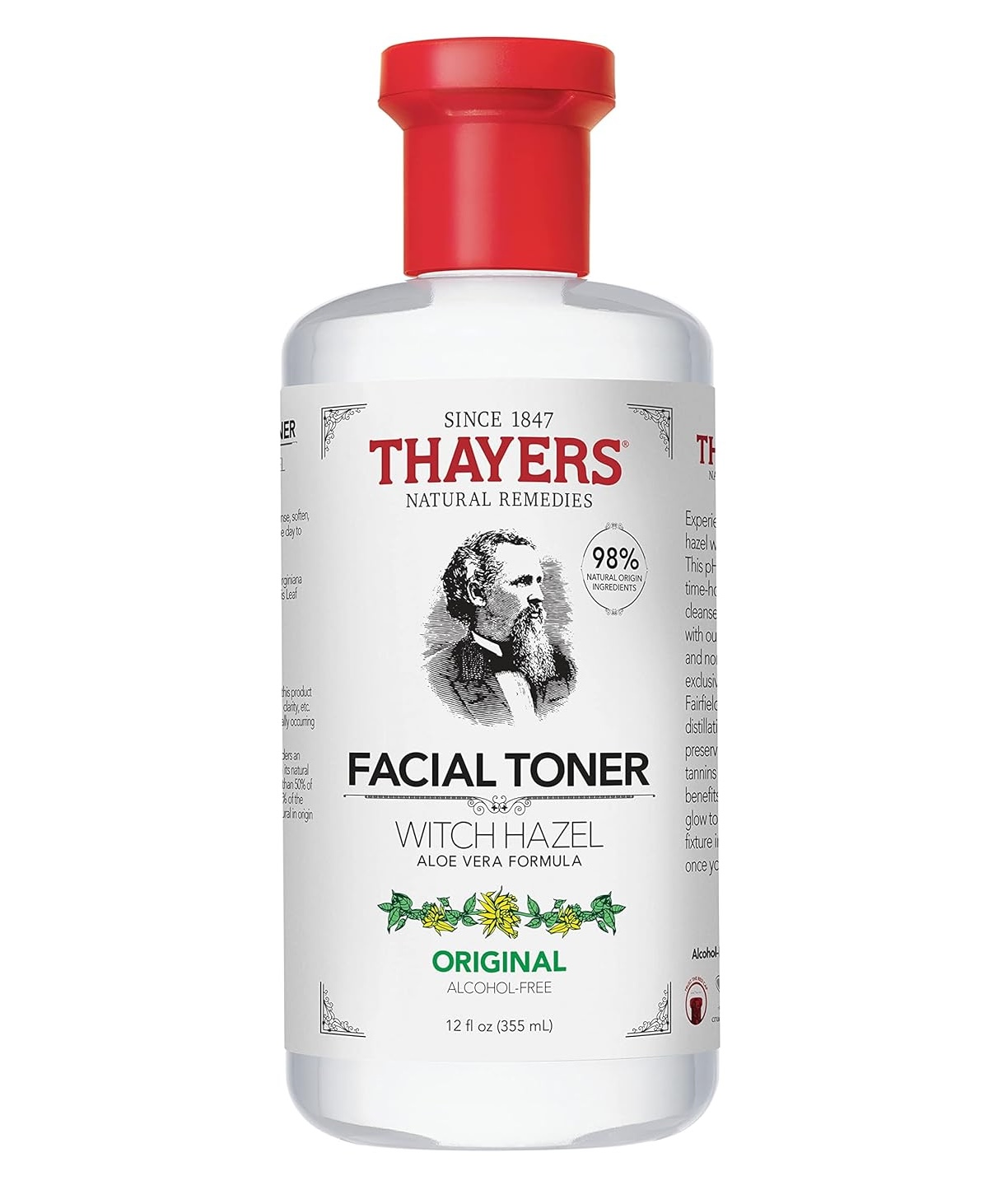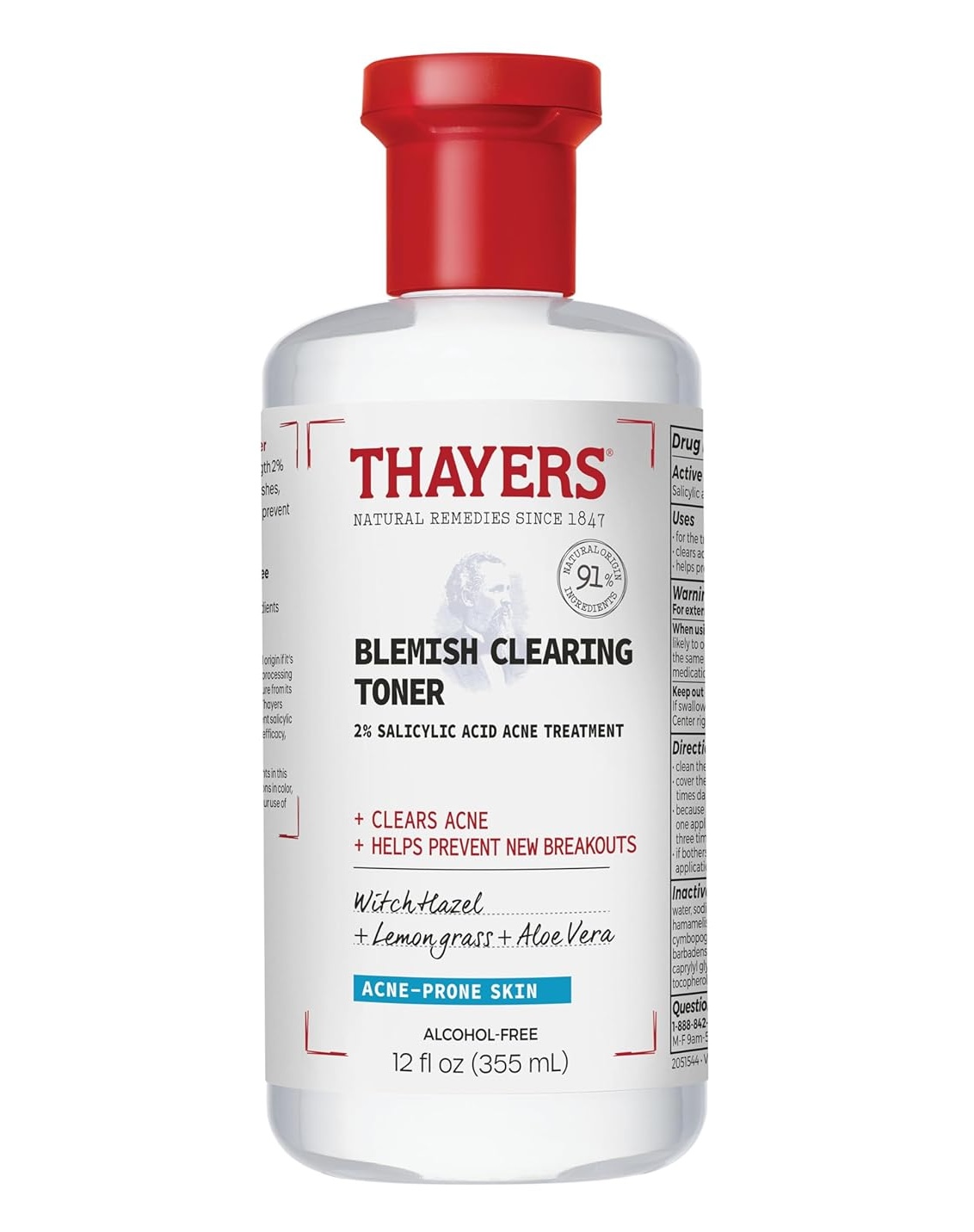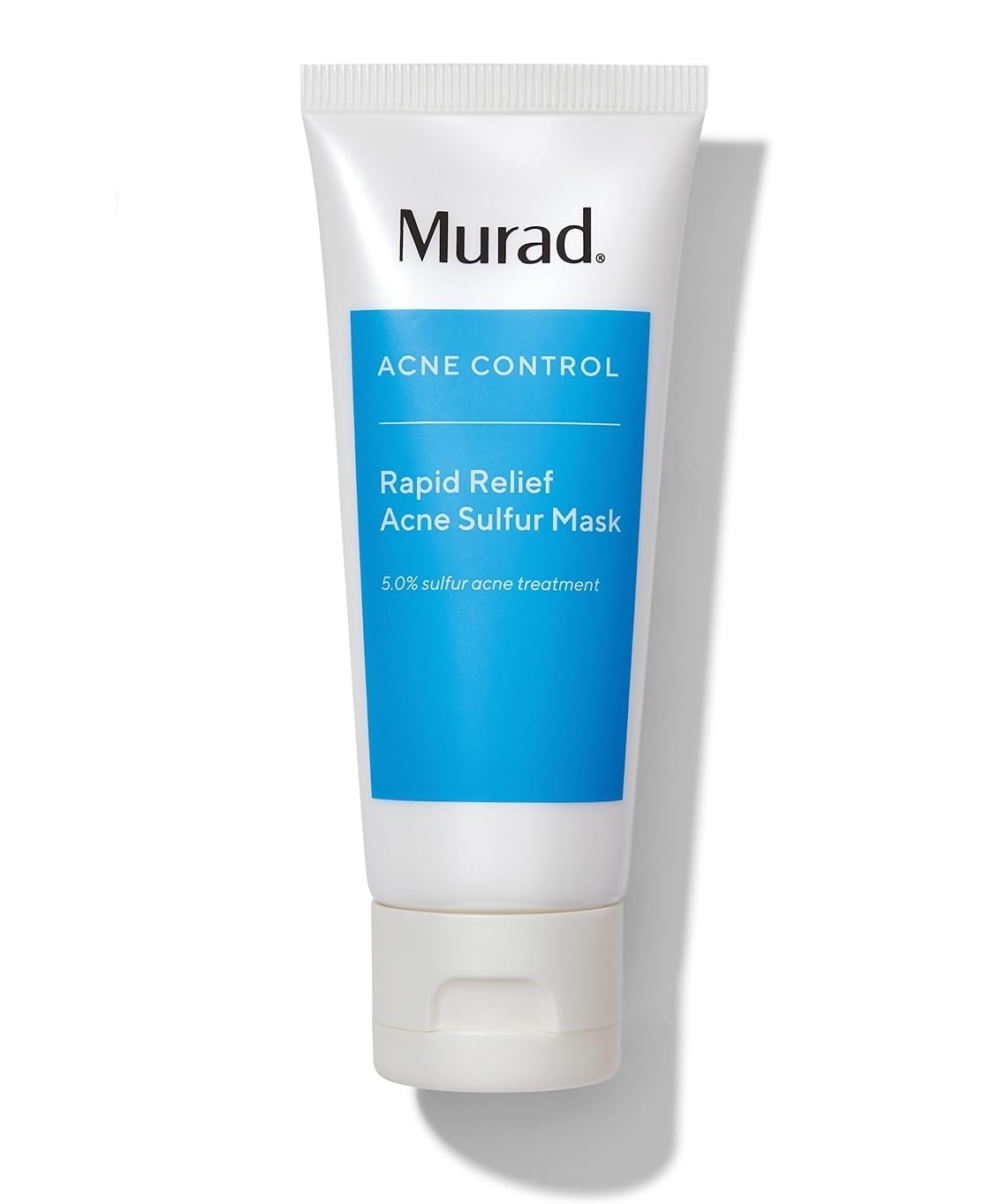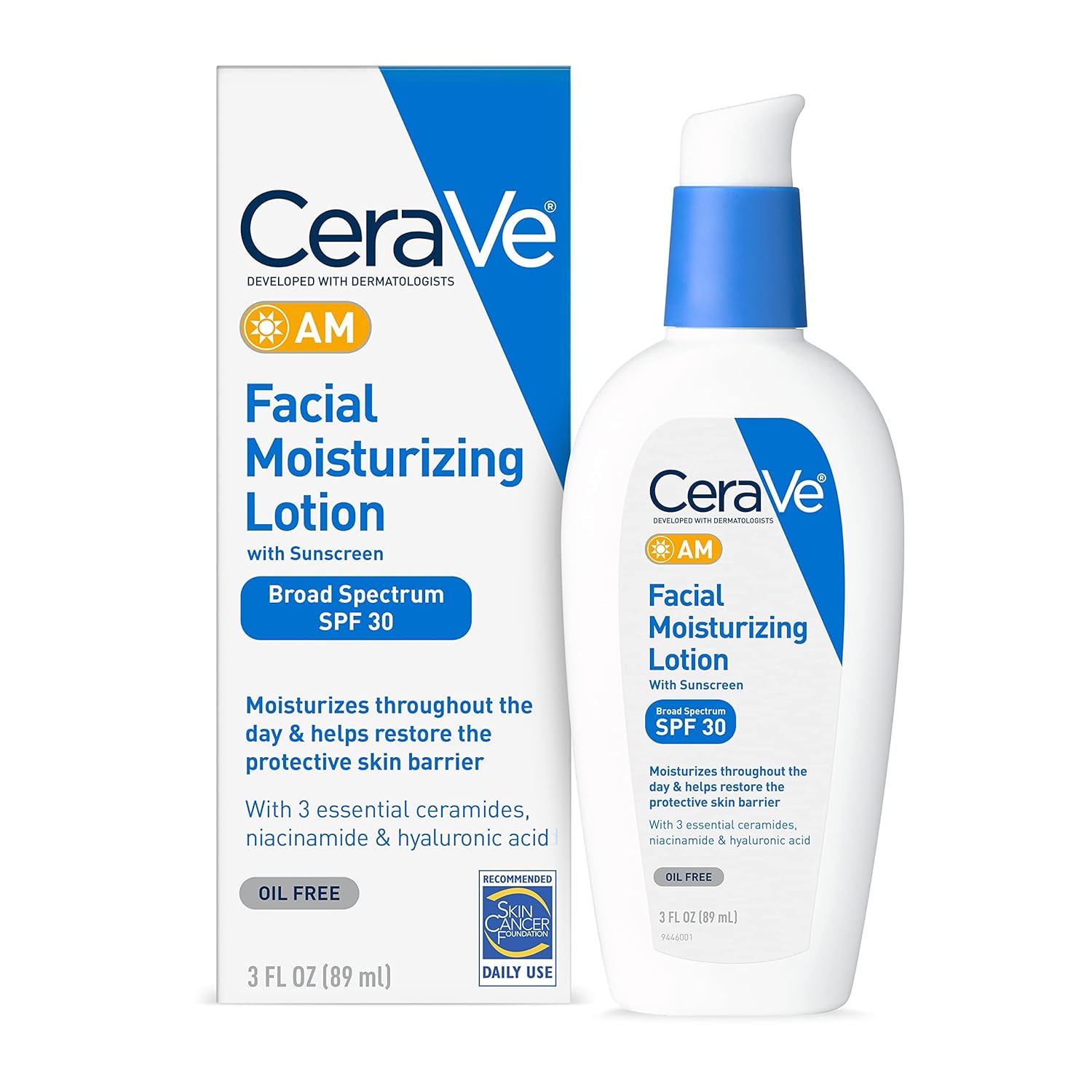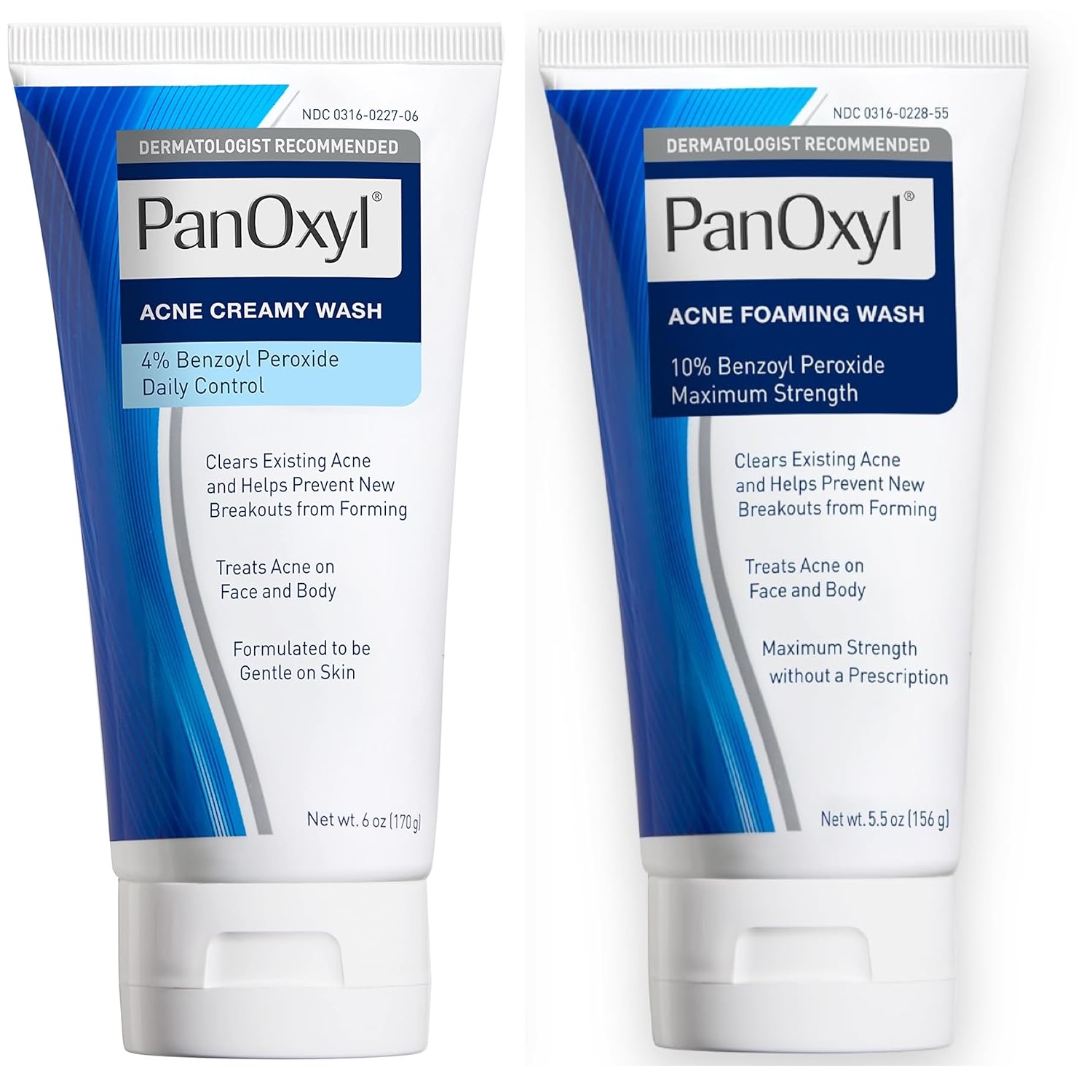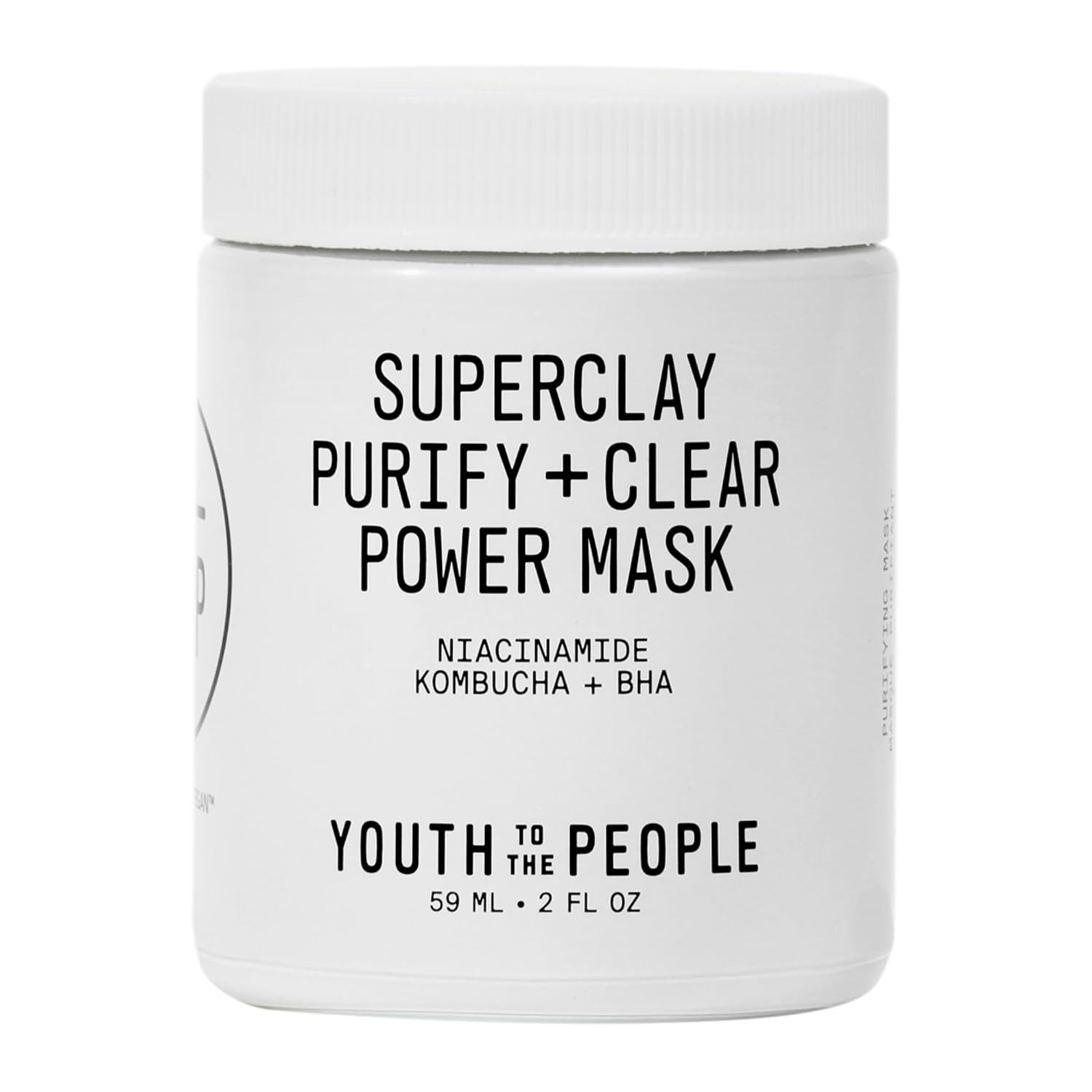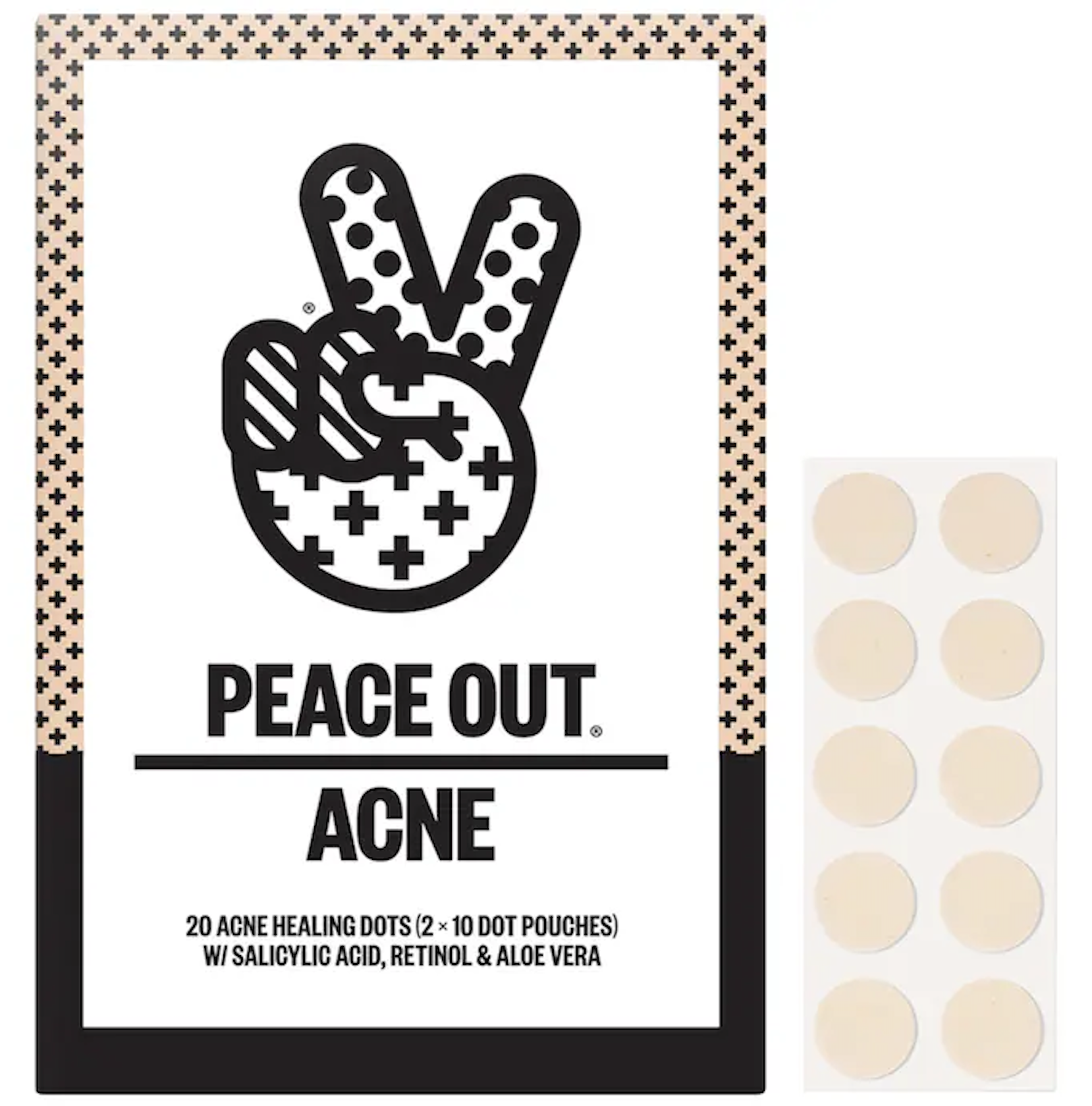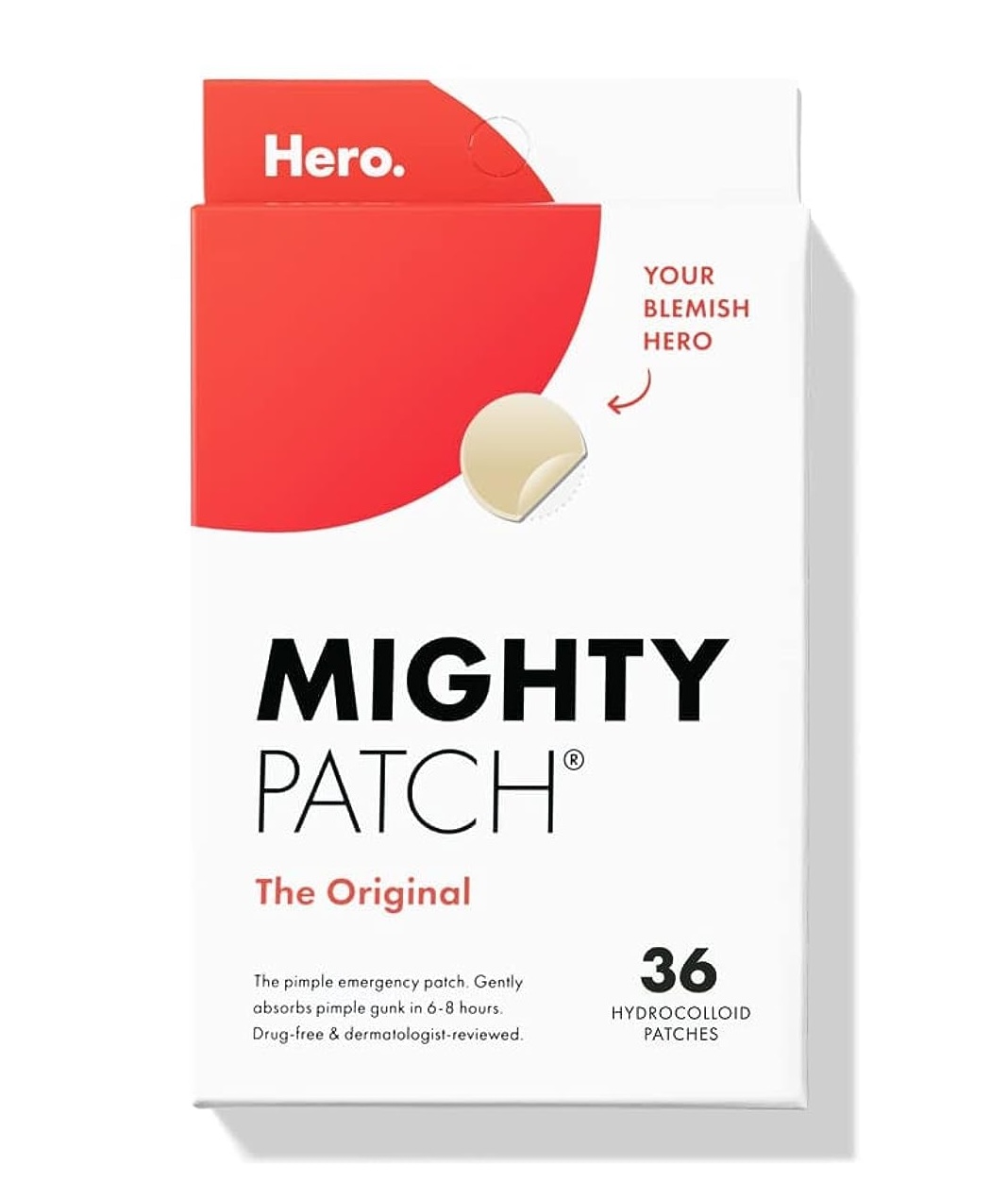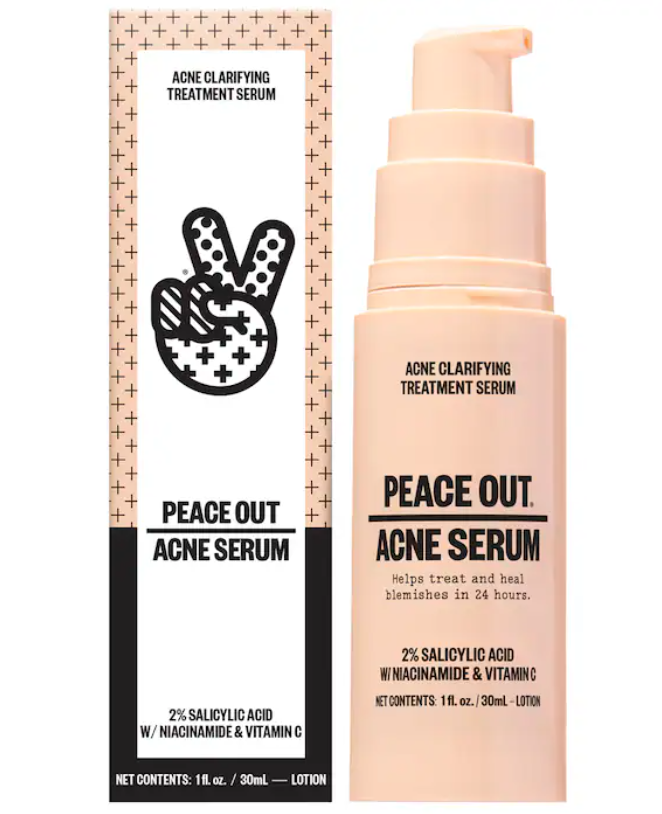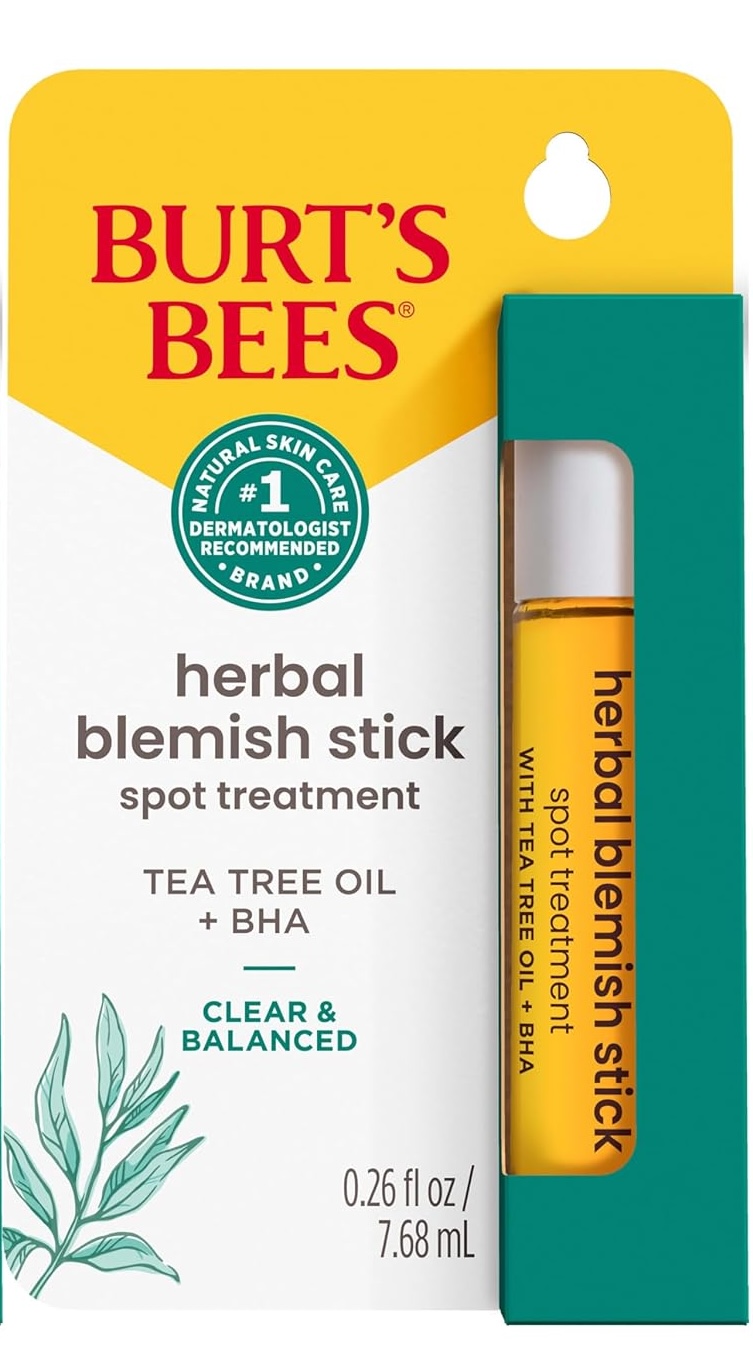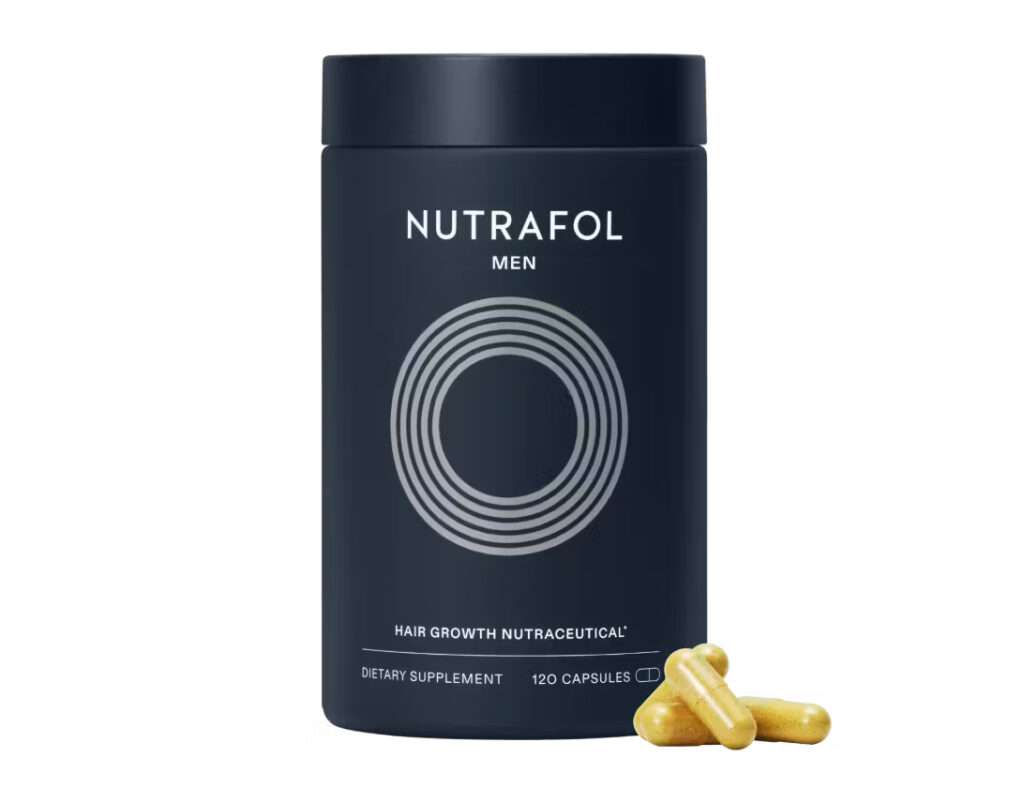ADVERTISEMENT


The Best Acne Treatment Tips and Products: From Root Causes to Prevention Efforts
Get some clarity on the root causes of acne, and then put your best face forward.

by Adam Hurly
June 13, 2024
Thank you for using our links to make your purchases. All products featured are selected for editorial purposes, and are not sponsored placements. Any purchases made with our links may help us earn an affiliate commission, including but not limited to Amazon’s Associate Program. If possible, please prioritize brands’ own websites when they are provided by us.
Acne is a real buzzkill. You can have everything else in order—nicely coifed hair, dressed to the nines, smelling as fresh as you look, plus a bright and perfectly aligned grill—but a singular pimple can sprout between your eyebrows and deflate your well-groomed ego entirely. That’s why the best acne treatment is a full-court press against active and potential pimples. You’ve got to stop acne before it starts, and know how to make it disappear if and when it does pop up.
Read on for my acne deep dive, which focuses on the root cause of acne (all types), the best ingredients to seek out (and some to avoid), the best acne prevention tips, big-picture acne treatments, as well as one-off spot treatments and pimple patches. This advice comes from a decade of interviewing top dermatologists and skincare industry pros, as well as dealing with acne my entire life. I’ve been able to get my acne under control, but every so often… a small bout of stress (or maybe a giant slice of pizza) reminds me that I’m still vulnerable. Hopefully these acne fighting tips get you almost all the way there, too.
Fair warning: This is a long article, so if you know what you’re looking for already, I suggest jumping to the correct section…
The Best Products for Acne
These are some of the acne products that appear throughout the article.
- The Best Gentle + Purifying Cleanser for Acne: Cardon Purifying Clay Cleanser
- The Best Benzoyl Cleanser for Acne: PanOxyl Acne Face Washes with Benzoyl Peroxide (4% low-grade option | 10% high-grade option)
- The Best Salicylic Acid Treatment for Acne: Paula’s Choice Skin Perfecting 2% BHA Liquid Exfoliant Salicylic Acid Treatment
- The Best OTC Retinoid for Acne: Differin Acne Treatment Adapalene Gel 0.1%
- The Best Toner for Acne: Thayers Blemish Clearing Toner with Witch Hazel and 2% Salicylic Acid
- The Best Antimicrobial Face Mask for Acne: Murad Rapid Relief Acne Sulfur Clay Mask with 5% Salicylic Acid
- The Best Purifying Face Mask for Acne: Youth To The People Superclay Purify + Clear Power Mask with Salicylic Acid
- The Best Daytime Moisturizer for Acne: CeraVe AM Facial Moisturizing Lotion SPF 30
- The Best Salicylic Acid Acne Patch: Peace Out Acne Healing Dots with Salicylic Acid
- The Best Hydrocolloid Acne Patch: Hero Mighty Patch Hydrocolloid Acne Pimple Patch
- The Best Tea Tree Oil Spot Treatment for Acne: Burt’s Bees Herbal Blemish Stick with Tea Tree Oil
- The Best Salicylic Acid Spot Treatment for Acne: Peace Out Salicylic Acid 2% Acne Treatment Serum
Please use our links (those above as well as any links featured throughout the article); doing so supports the work we put into making Blue Print by Adam Hurly.
ADVERTISEMENT
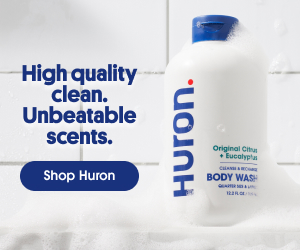
What Causes Acne?
First, let’s discuss the root cause behind acne, which of course isn’t one singular thing.
In terms of big-picture factors, acne can stem from eating too much sugary food, or from hormone fluctuations, genetics, a reaction to products, pore-clogging ingredients, a buildup of sweat, bad hygiene (think dirty towels and pillow cases), yadda yadda yadda.
But at the root, what is happening is that your skin’s natural oil, AKA sebum, sometimes gets trapped in the pore around a hair follicle. This clogging can occur due to blockage by trapped skin cells, or a sudden increase in sebum production that gets backed up. And this sebum uptick can be triggered by many of those previously mentioned “causes of acne”—like bacteria, or fluctuating hormones, or bouts of stress and increased cortisol levels. The more I explain it, the more obvious it becomes that you really just need an anti-acne regimen if you’re pimple prone.
The Newsletter: Subscribe to Blue Print by Adam Hurly
The best grooming gadgets, new products, gift guides, and game-changing advice—all inside our free newsletter. (Plus occasional big-ticket giveaways, too!)
Different Types of Acne
You may find yourself prone to a specific type of acne, or dealing with different types at different times. Understanding the primary kinds of acne will inform you on how to proceed with treatment and future prevention—and might even save you from proceeding with the wrong treatment.
Comedones
Comedones include blackheads and whiteheads. These are usually just trapped oil and skin cells. Blackheads are when the sebum itself breaches the surface of the skin and oxidizes, whereas whiteheads have a thin layer of skin still over top of them.
Inflammatory acne
The inflammatory types of acne include papules and pustules, as well as nodules and cysts; these are all more commonly resultant of hormonal fluctuations, stress, and bacteria proliferation (and are also the kinds that can lead to permanent, ice-pick acne scars).
Papules vs. Pustules
I think of papules as a barely-there red inflammation that usually goes away within a day or two, whereas pustules look like the second-stage Pokemon of whiteheads. Pustules are so bulgy and tempting to pop, but doing so usually means you’ll risk scarring or a dark spot that will linger for weeks or months; plus you usually can’t drain it entirely on the first go, so it just reforms.
Nodules vs. Cysts
The key difference between nodules and cysts is that cysts are filled with pus and often look like the final boss version of a whitehead (once more, please don’t pop or drain it; this will increase permanent scarring potential). Nodules are the excruciatingly painful ones that feel tender to the touch. Absolutely do not press on them, as you will worsen their havoc. If you are in a hurry to get rid of these things, try to get a walk-in appointment with your dermatologist. They can safely drain them, or provide cortisone shots to promptly deflate inflammation.
The Best Acne Prevention Efforts
Acne prevention has a lot of overlap with acne treatment, so don’t forget to read the next section, too, which focuses on treatments.
As for proactive prevention, the most important thing you can do is take an audit of your habits and behaviors. The big-picture stuff is related to health, hygiene, sleep, skincare habits, and stress. I won’t dissect what’s happening for all of the bullets below, but know that it usually has something to do with triggering an overproduction of sebum (oil) in the pores, trapping dead skin cells in the pores, as well as altering hormone levels or spiking cortisol levels (both of which can trigger the sebum excess production, too).
1. Health: In your diet, avoid foods and drinks with excessive levels of added sugar as well as processed foods (the latter includes fast food and refined carbohydrates like white rice, pasta, bread). Cut back on the party vices, like alcohol, smoking, and drugs. Swap whey protein for vegan whey. Minimize dairy intake. Drink lots of water.
2. Hygiene: Don’t touch your face so much, and make sure your hands are clean when you do. Wash towels and pillowcases weekly. Shower quickly after working up a sweat. Cleanse morning and night. Make sure your hair is clean or rinsed out before bed, and don’t fall asleep on your hair if it’s long (wear a clean headband or a stretchy Buff to keep it out of your face and off your pillow; yes, with the Buff you even get to live your reality TV Survivor fantasy; I fold mine in half and then wear it like a large headband). Shower with mild-temp water (never hot), and minimize the time spent in the shower to avoid drying out the skin.
3. Sleep: Get 7-8 hours nightly, to lower cortisol levels in your body. Again, use clean pillowcases (bonus points if they’re silk, which won’t absorb the oils from your skin and then fester all day). Make sure your room isn’t overly dry, which will cause you to wake up with parched skin and can also trigger an overproduction of sebum. So, sleep with a humidifier during dry seasons (Levoit is the best, period) and keep the A/C on low if you require it during humid seasons.
Oh, and always use a night cream to protect skin from moisture loss while sleeping. My staple is this marshmallowy skin-cushioning night moisturizer from Kiehl’s; it suits all skin types, too. (My acne-prone skin approves, at least!)
4. Skincare habits: Again, don’t go to sleep without a night moisturizer, and cleanse twice daily; a cushioning clay cleanser like Cardon’s will soak up excess grease within the pores, but without dehydrating skin. You can use it morning and night without worry for your skin’s health—but with the confidence that it’s soaking up any sebum buildup.
Don’t use products with highly comedogenic (pore-clogging) ingredients, namely coconut oil and cocoa butter. Exfoliate regularly, ideally with a salicylic acid treatment to help clear pores of trapped skin cells and to regulate oil production in there, too. Similarly, an adapalene gel is a terrific night time retinoid treatment that regulates your cell turnover and prevents trapped cells. (More on specific products in the acne treatment section below.)
Paula’s Choice Skin Perfecting 2% BHA Liquid Exfoliant Salicylic Acid Treatment
buy on:
Consider using alcohol-free toner with witch hazel to temper oil production in the first place. Thayers is the unbeatable option here, and even has an option with salicylic acid for acne-prone skin; if you already have salicylic acid elsewhere in your regimen, you can nix it here and swap in the brand’s regular toner.
Thayers Blemish Clearing Toner with Witch Hazel and 2% Salicylic Acid
buy on:
A weekly detox mask with clay, sulfur, or charcoal to suck out excess gunk from the pores. The aforementioned Cardon Clay Cleanser works wonderfully as a makeshift 3-minute mask, too, and is a good way to save some coin. However, an all-time favorite mask for tempering my acne has been Murad’s tingly-fresh sulfur mask with salicylic acid, clay, and sulfur all in one.
I also suggest washing your face as the last step in your shower regimen, in case your shampoo or conditioner dripped any comedogenic ingredients onto your mug. Lastly, don’t wear any overly heavy moisturizers; I advise switching to an oil-free one, since some heavier oil-based hydrators could possibly suffocate the pores and cause a backup in your pores. I think CeraVe’s SPF 30 hydrator is one of the best you can get, since it not only gives relief to your pores but also defends against skin-aging UV rays.
5. Shaving: When shaving, take things slow, only use a fresh and sharp razor (replace them after 2-3 weeks or 6-8 shaves, whichever comes first). Don’t shave over your pimples, because ouch. In fact, it’s probably wise to invest in an electric shaver to avoid ingrowns and any skin breakage. Aim for a rotary option like Philips Norelco’s; it won’t shave quite as close as a foil shaver, but the difference is a half day’s worth of stubble at most. Nominal. I love recommending the second- or third-latest model, since you can get most of the benefits at a significant price chop compared to the newest gadget (which might run you like $250 or more).
Philips Norelco 9400 Rechargeable Wet/Dry Electric Shaver
buy on:
6. Stress: This is easier said than done, but try to minimize stress, in all senses. Prioritize sleep. Exercise regularly. Eat healthy. Stay hydrated. Cut the vices. See your friends. Don’t work late. Don’t let the haters stop you from doin’ yo’ thang. Etc etc. Stress impacts our body in so many ways, and it wreaks havoc in so many ways, from acne to hair loss to signs of aging—and that’s just the superficial side of things.
Beyond all that, there are some prescriptions you can ask your doctor about, like accutane which needs to be carefully monitored but can shrink oil glands and significantly clear up inflammatory acne. Antibiotics (oral or topical) are also effective at killing the bacteria that often aggravates acne, but it is better used as a treatment than a preventative measure.
Not to be a broken record, but read the acne treatments section below to get more information, as well as my favorite ingredients and products for disappearing blemishes and preventing their return.
The Best Acne Treatments
Each type of acne requires its own specific treatment; some are fixable with an overnight pimple patch or spot treatment, while others call for heavy-duty prescriptions that need to be closely monitored by your board-certified dermatologist. Also, many regular-use products for acne that can also be deployed as a means of prevention—so read the section above to understand the optimal kinds of products that you can use to fight acne in an ongoing way, whether it’s present or not.
As for aggressive treatments, there are three ways to target acne, based on key root causes. Many of them center on prescriptive remedies from the doctor, though at-home options often exist for each, too.
For overactive oil glands
If your hormones are all over the place and are causing large swatches of inflammatory acne, then your acne is likely caused by an increase of oil production, and backed-up pores. (Many of us know this plight from our teenage years.) The most common over-the-counter ingredients to target oil regulation include witch hazel (mostly found in toners), tea tree oil, and salicylic acid.
The perfect product, in my opinion, is one I mentioned above: Thayer’s witch hazel toner with 2% salicylic acid.
Thayers Blemish Clearing Toner with Witch Hazel and 2% Salicylic Acid
buy on:
Prescriptive options: For extreme cases, the doctor may suggest an isotretinoin prescription (the generic for Accutane). If you are someone who gets a lot of stress pimples in adulthood or who experiences fluctuating hormones, then you’re also a potential candidate, as isotretinoin shrinks your oil glands gradually over the course of use, so that they produce less oil and in turn you get fewer pimples. It can be a social life saver for people.
But this is a very carefully monitored process, involving regular liver checkups with each new prescription, since heavy doses of Vitamin A can occasionally be toxic. Isotretinoin has a number of other side effects, and almost everyone taking it experiences severely dry skin, which normalizes after you cease use. The worst is constantly chapped, cracked lips. Some doctors are reluctant to prescribe isotret these days, but if your inflammatory acne plagues you, then absolutely ask about it. You’ll have to quit drinking alcohol in the interim, too.
For frequently trapped skin cells
If you are treating acne that is regular enough to seek treatment but not severe enough to spark worry, then you’re probably a prime candidate for a topical retinoid.
The primary ones would be topical tretinoin or high-grade adapalene, which are comedolytic and prevent pimples (comedones) from forming. They help regularly exfoliate your skin and accelerate cellular replenishment; this means fewer dead cells lingering behind to get trapped inside your pores. Both of these drugs exist in lower grades over the counter, which are excellent for acne mitigation in the future (as beyond that, fantastic skin-smoothing anti-aging benefits; in fact, maybe stay on the prescription tretinoin forever).
Typically, though, adapalene gels are the foremost recommendation for acne-prone skin. (And Differin gel is the name in that category.)
Prescriptive options: Certainly talk to a dermatologist about a tretinoin prescription if you want to step things up by aggressively improving cellular turnover in your skin. Just be sure to speak with the doc about how to incorporate it, how to maximize its efficacy, and how to counter potential sensitivities—ample SPF use is chief among the “musts” when using all retinoids, but especially high-grade tretinoin. Apostrophe is a great digital-dermo interface for tretinoin prescriptions.
For bacteria buildup
If your inflammatory acne is the result of the bacteria “p. acne” (propionibacterium acne), then an over-the-counter benzoyl peroxide cleanser or cream might be the right remedy (in 4-10% grades, based on severity). Benzoyl is the stuff that bleached all your pillowcases and towels as a teen, but it’s also the reason many of us held our head high in our late teens, thanks to its bacterium-thwarting abilities.
PanOxyl is the big name in this category, and has a 4% option for general tempering and prevention, while its 10% cleanser offers maximum potency.
PanOxyl Acne Face Washes with Benzoyl Peroxide (4% and 10% options)
buy on:
Prescriptive options: However, for severe cases, docs will possibly prescribe you an antibiotic like doxycycline (oral) or clindamycin (topical), or even a prescription-grade benzoyl fix or in-office laser treatment.
Acne Treatment Summary
To summarize all these three approaches to acne treatments: Just know there are solutions out there for the worst cases of acne, no matter the key underlying cause. There are many clinical treatments too, like lasers and the aforementioned cortisone shots. The best advice I have for you is to make an in-person appointment with your dermatologist and get tailored opinions, and to check in with the doc regularly as you monitor results and potential side effects.
Key Acne-Fighting Ingredients
Here are the best ingredients to have ready in your over-the-counter regimen, some of which I referenced above. I’ll drop in some favorite products, too.
Topical adapalene gel 0.1%
There’s no reason you should be dealing with inflammatory acne and not using adapalene at home. It’s arguably the best retinol for treating and preventing acne. Upgrade to the Rx-grade 0.3% with your dermo if needed. If you’re using a prescription-grade tretinoin regularly too (since I recommend it like every other paragraph across this site), then you may not need the adapalene. But some docs swear that the adapalene prescription outperforms when it comes to acne, so it’s ultimately a toss up. Adapalene is arguably the best treatment for post-inflammatory acne marks and related hyperpigmentation, too.
Salicylic acid
This ingredient is a must for acne-prone skin. You’ll find salicylic acid in high-grade spot treatments (like 2% formulas) as well as many pimple patches, cleansers, and some overnight serums and night creams. It exfoliates dead skin cells, and also seeps through your skin’s lipid layer into your pores, where it can loosen trapped cells as well as diminish trapped sebum (and in turn regulate future sebum production).
Paula’s Choice Skin Perfecting 2% BHA Liquid Exfoliant Salicylic Acid Treatment
buy on:
Thayers Blemish Clearing Toner with Witch Hazel and 2% Salicylic Acid
buy on:
Benzoyl peroxide
If you’re facing a battle with regular inflammatory acne (and you’re certain it’s due to bacterial buildup), then a benzoyl peroxide cleanser or light-grade night cream can counter the microbes and reduce future breakouts. If you’re constantly fluctuating with these types of blemishes, it’s worth using benzoyl after they disappear, too, or addressing the root cause with your dermo. (Consider topical probiotics to start, and do an audit of your hygiene, as outlined in the acne prevention article.)
PanOxyl Acne Face Washes with Benzoyl Peroxide (4% and 10% options)
buy on:
Sulfur and clay
These drying agents are great for sucking up the gunk inside any comedones (white heads and black heads). You can use a face mask as a spot treatment to target individual pimples as they appear, or apply it en masse for ongoing prevention. (I myself recommend a once-weekly detox mask with clay.)
Youth To The People Superclay Purify + Clear Power Mask with Salicylic Acid
buy on:
Hydrocolloid dressing
This is actually a type of wound dressing, which has been shrunken down to pimple size for the decompression of inflammatory acne. Hydrocolloid pimple patches are the closest thing we have to an OTC miracle worker for acne—especially ones that also have little micro-darts filled with salicylic acid to help clear out the gunk trapped inside an inflamed blemish.
Peace Out and Hero are my favorite (and very affordable) patches for my blemishes—and they are super discrete too, assuming you don’t want to call attention to the pimple (but perhaps don’t mind the ever-so-slight appearance of a translucently flesh-toned patch).
Read on for more about pimple patches, which are one of many types of spot treatments for zits.
ADVERTISEMENT
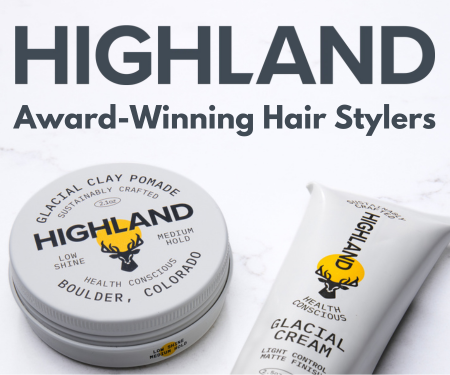
Spot Treatments
With spot treatments, it’s all in the name: These are tiny, targeted treatments for one-off blemishes on your face. In general, they target acne, but there are also spot treatments for hyperpigmentation marks (including post-inflammatory acne).
Targeted acne spot treatments tend to deploy specific ingredients into the blemish in order to make it disappear. Here are a few key ingredients in spot treatments:
1. Salicylic acid can seep into the pore and clear out trapped skin cells and sebum buildup. It’s common in cleansers, serums, gels, and even pimple patches. I think salicylic acid is the real gold standard here. Aim for a 2% treatment for maximum impact.
2. Tea tree oil has fantastic anti-inflammatory and antimicrobial abilities, in addition to oil-balancing powers. Not many ingredients can target different types of acne in so many ways. It’s not recommended to apply pure tea tree oil right to your skin (especially inflamed skin), so please find a formula that has safely formulated a tea tree oil gel, serum, or cream for this very occasion.
3. Sulfur is popular because it can dry out the pimple and has antimicrobial properties as well.
4. Clay or charcoal base makes for a terrific spot treatment since they can also extract oil from deep within the pore. And to that note, really any cream, lotion, or gel—and even some cleansers—can double as spot treatments if you target them on a problem area.
Youth To The People Superclay Purify + Clear Power Mask with Salicylic Acid
buy on:
5. Benzoyl peroxide in 5-10% formulas can help nix bacterial acne, though I find that most instances I get are pronounced in numbers, and rarely a one-off deal. Still, if you have a budding blemish that might be caused by bacteria, you can zap it with a spot treatment like Proactiv’s below. Just remember that it can stain your pillowcase!
PanOxyl Acne Face Washes with Benzoyl Peroxide (4% and 10% options)
buy on:
There are many other great complexion-clearing ingredients out there, from retinoids to alpha hydroxy acids, as well niacinamide that are great in big-picture regimens, but which I don’t think are as important to prioritize in same-day or quick-fix spot treatments.
As for another incredible spot treatment ingredient for acne: hydrocolloid wound dressing, as found in acne patches. Read on…
Acne Patches
Acne patches are one of the best things to happen to skincare in the past couple decades. We have the Korean skincare industry to thank for these sticker-like spot treatments. They take the science behind hydrocolloid medical wound dressings, which trap moisture inside the wound area to expedite recovery—so imagine that science applied to a tiny acne inflammation. (Though, let’s be honest, the acne that requires a pimple patch never feels tiny to its wearer.)
Hydrocolloid also absorbs moisture surrounding the blemish to create a puffy little healing environment inside the sticker; many people incorrectly think that this puffy sticker is the result of grease being sucked out from the pimple—not true. Instead, it’s a sign that the science is working and the skin is on the road to recovery.
You can use them to heal broken blemishes and to deflate budding ones, depending on the type of pimple patch used. And, you can embrace the fact by wearing bright attention-grabbing stickers, or you can discreetly cover them with neutral-toned and translucent-ish patches. There are a bunch of pimple patches on the market right now, but I divide them into three mental categories:
1. Plain hydrocolloid stickers: They expedite healing and reduce inflammation. Great for a popped pimple or budding baddie. If you want to go full “look at me” mode, then Starface is the ticket. But if you want a more invisible approach, stick with Hero’s hydrocolloid patches, which remain the gold standard. No surprise there, since they brought the world this technology from Korea more than a decade ago. (Check out their entire store for the handful of different sizes, shapes, and other patch-centric solutions.)
2. Hydrocolloid sticker with salicylic acid: These likely have little micro-darts on their underside with a touch of salicylic acid inside each dart to help free up any trappings in the pimple while the hydrocolloid focuses on healing and deflation. I save these ones for nodular acne, and would advise using them on cystic acne as well. But on the upside of that—and this part means the most to me—these patches prevent those deep pimples from erupting, and spare me the months of post-inflammatory acne marks.
3. Hydrocolloid + numerous other ingredients: Some of the fancier patches may deploy everything from hyaluronic acid to niacinamide to tea tree oil. These are all great ingredients, but there’s only so much those little micro-darts can contain, and I’d rather just let a patch be a patch. So, I don’t go out of my way to use these ones. Instead, if I need a targeted ingredient, I just apply it when I’m at home and not using a patch.
How to Apply Acne Patches
Make sure you apply a patch to freshly cleansed, dried skin, with no other products interfering. Center the pimple, press the patch down without applying any force to the blemish. Wear it for at least 2 hours, or as long as overnight. They advertise 8 hours as the limit, but don’t panic if you go over that.
One Hypothesis + Warning on Pimple Patches
This is entirely my own belief, and not something rooted in research or science. But I do think I have overused pimple patches in the past. Like, I spot a pimple, place a sticker, and then replace it every 8 hours with a new sticker, for a day or two on repeat, without ever letting the skin actually breathe. I usually do this for the bigger inflammatory types, only to notice that the gunk then stays suppressed inside the blemish without ever surfacing or fully disappearing—at least not for a week or more.
Again, this may be totally inconsistent with studies or test runs, but I have had the most success when I cycle between 8 hours on / 8 hours off with my patches, particularly with inflammatory acne. Just my theory and best practices from trial and error!
ADVERTISEMENT
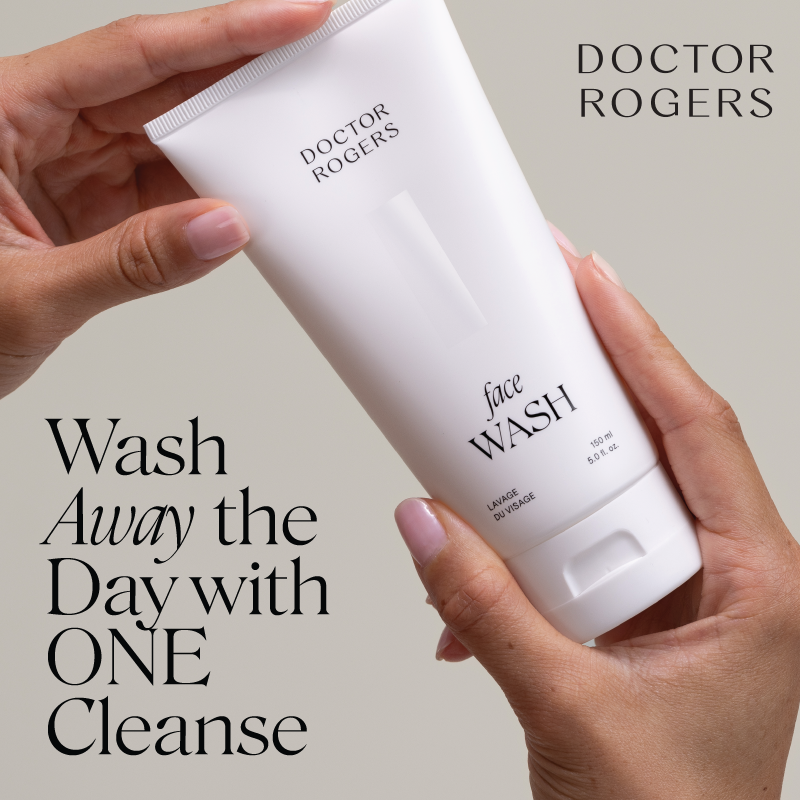
ADVERTISEMENT

ADVERTISEMENT

More from Blue Print by Adam Hurly:

